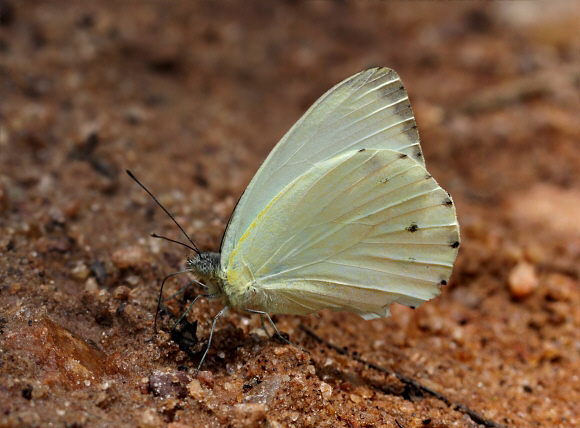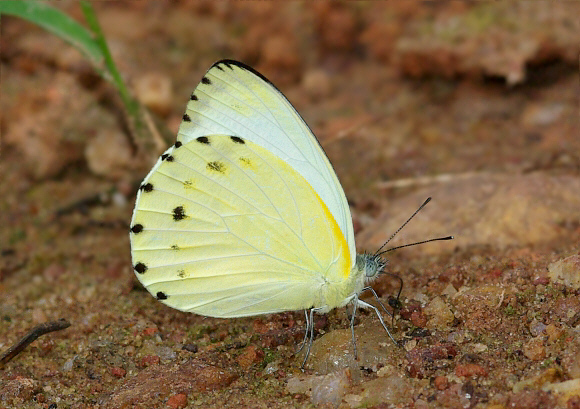
Introduction
The genus Dixeia comprises of 9 species, distributed variously across the Afrotropical region.
Males of all Dixeia species are white or pale cream on the upperside with a narrow black apex. The females are either a dirty white colour or slightly yellowish, and are usually suffused with blackish around the basal area of the forewings. They also have one or two suffused blackish spots on the outer forewing, and a series of small black marginal spots on the hindwing. On the underside both sexes have white forewings and slightly yellowish hindwings, with small black marginal spots.
Dixeia orbona is distributed from Senegal to Tanzania and Congo.
Habitats
This butterfly normally breeds in dry open forests and dense savannah, but during migrations it can also be found on agricultural land and along logging roads through rainforest.
Lifecycle
The larval foodplant is Capparis (Capparaceae).
Adult behaviour
Males are usually seen as singletons amidst aggregations of other Pierines, visiting patches of mud or damp sand from which they imbibe mineralised moisture.

